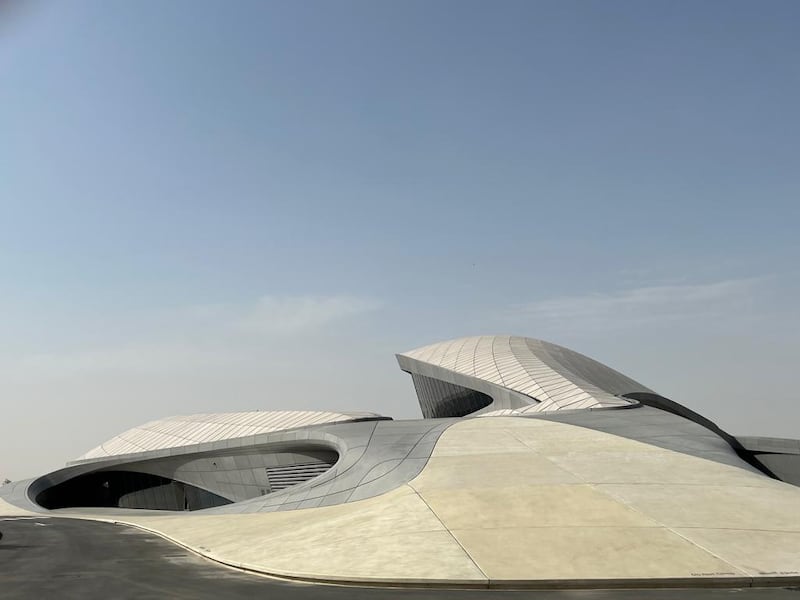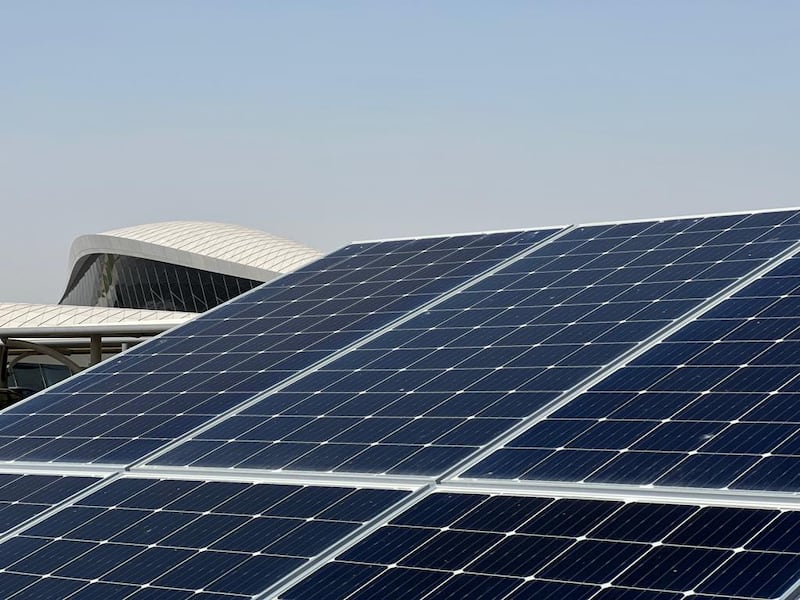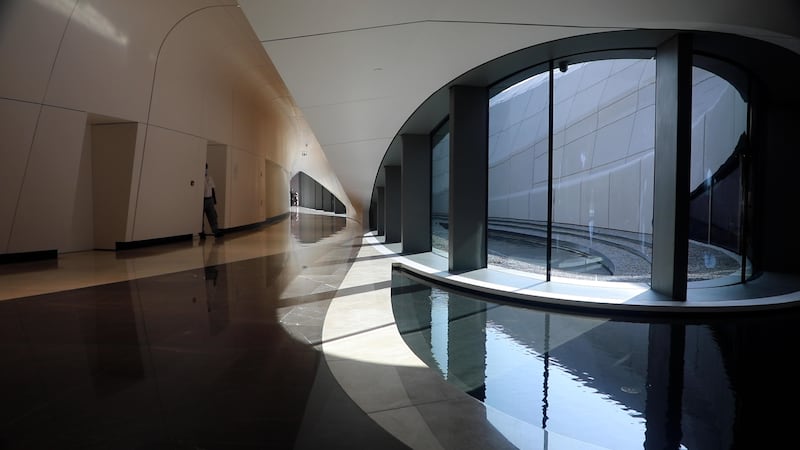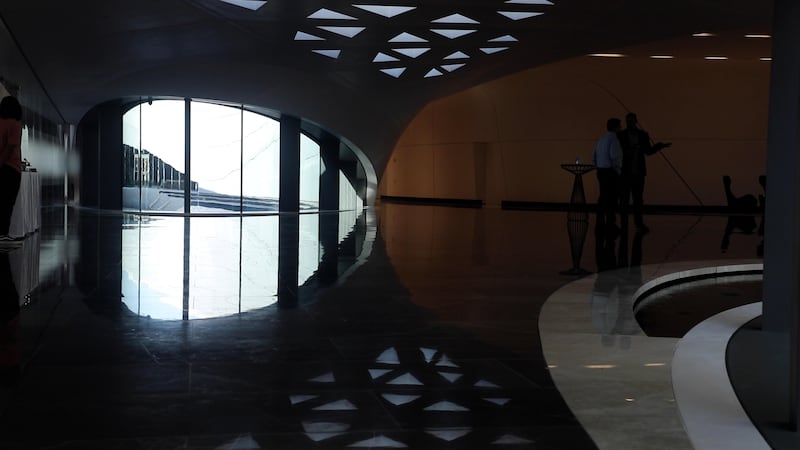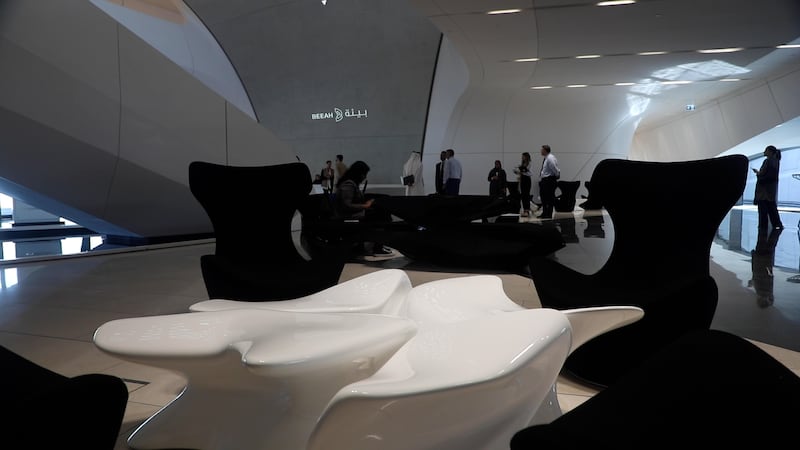A striking Sharjah building in the shape of a sand dune is primed to be a beacon of sustainability and serve as a fitting legacy for renowned architect Zaha Hadid.
The headquarters of waste management operator Beeah was the last project designed by Zaha Hadid before her death in 2016.
Her team constructed a modern masterpiece across 9,000 square metres, using sustainable materials to create a building with 40 per cent of its power provided by the sun.
Illuminated, sweeping staircases take visitors up to an art gallery on the first floor, with screens showing a time-lapse video to explain the building’s five year construction.
Now open to full capacity of 500 workers, the building is breaking new ground in how to provide a sustainable working environment.
Sharjah joins race for UAE's most breathtaking building
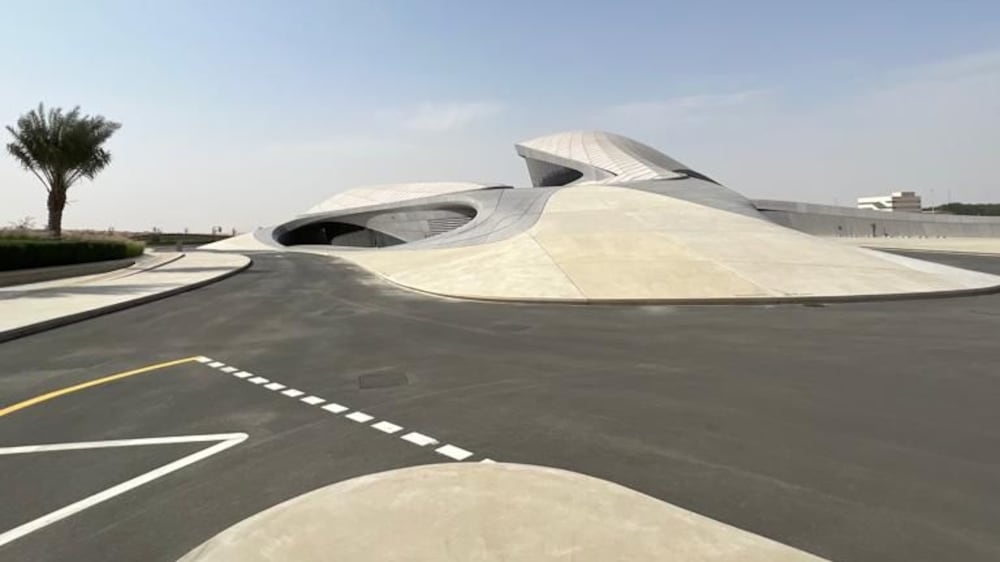
Green vision
“We aim to operate as sustainably as possible, and used recycled materials in the construction of the building,” said Nada Taryam, managing director of Beeah HQ, which manages waste management across the country.
“Native plants have been used in the landscaping and reduced the amount of water consumption.
“A power pack stores excess energy from the photovoltaic panels, so we have a holistic strategy to achieve sustainability.
“Every project has its own specific requirements when energy comes into play, but the basis on which we have built this design can be learnt from.
“All of these sustainability measures can be taken and applied to other projects.”
The building's high thermal mass allows heat to be absorbed during the day and dissipated at night to encourage cooling, while its curved structure allows the flow of natural sunlight to reduce the energy required for lighting.
An artificial intelligence system enables the building near the Alsajaa industrial area to learn to become more efficient as more people use it.
Its developers say it conforms to the highest standards of energy efficiency in the world.
Windows are positioned to reduce solar glare, while special glass cuts radiant thermal energy to keep the building cooler during summer.
While the glass limits the entry of infrared and ultraviolet light, solar panels supported by Tesla-made battery packs capture the power of the sun and store it to run the building’s air conditioning system.
The building's components and management systems are integrated to maintain and improve its efficiencies.
Conference rooms are equipped with technology to automatically transcribe meeting minutes and email them to participants.
The building is the third in the UAE to be designed by Zaha Hadid architects, following the Sheikh Zayed Bridge, opened in Abu Dhabi in 2010, and The Opus hotel and apartments complex opened in Business Bay, Dubai, in 2018.
“As it learns from its occupancy, this building could potentially become one of the most sustainable buildings in the UAE,” said Ms Taryam.
“Certain decisions were taken, such as using glass reinforced panels on the ceiling which refract the sunlight so contribute to its efficiency and temperature control.
Defying convention
“There is a misconception about what these kind of buildings should look like, and we have defied that.
“There isn’t a rule book to say green buildings should be lined with solar panels. We have proved we can integrate architecture as well as sustainability to create something iconic.
“Zaha Hadid has something that distinguishes her from any other architect of her time. Every project of hers has its own context, but her ideas are adapted for each specific project.”
